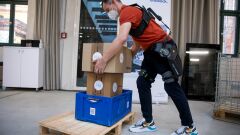Enjoy complimentary access to top ideas and insights — selected by our editors.
Want unlimited access to top ideas and insights?Subscribe Now
Want unlimited access to top ideas and insights?
Workers' compensation insurance is a costly business by any stretch of the imagination, and that's just when considering legitimate claims — workers' comp fraud costs billions of dollars per year.
It's no surprise, therefore, that organizations are constantly looking at new ways to make the working environment a safer place for their employees, as well as ensure the accuracy of workers' comp claims.
Read our roundup to find out how the industry is facing up to the latest developments in workers' comp.





